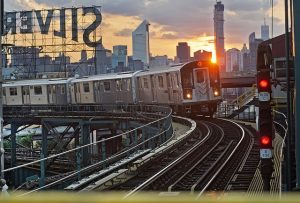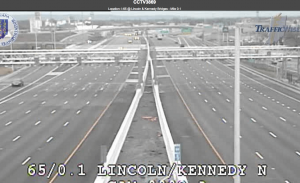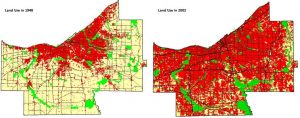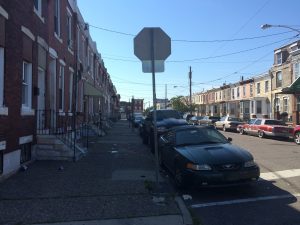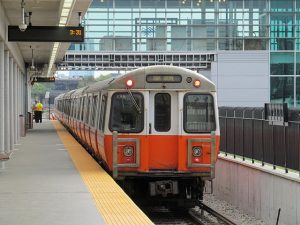My latest podcast features Tom Wright, president of the Regional Plan Association in New York. We talk about his very unique organization, the threat to the region posed by the Amtrak and commuter rail tunnels under the Hudson River, resolving the New York region's governance dysfunction, the highest priority infrastructure needs in the region, and a bit about megaregions. It was a great conversation. If the audio player doesn't display for you, click over to listen on … [Read more...]
Louisville Bridges Project Is the Biggest Transportation Boondoggle of the 21st Century
I have been a steadfast critic of the project to build two new bridges across the Ohio River in Louisville for over a decade. In fact, my first critical post on the bridges proposal was put up in 2007 less than six months after starting my original Urbanophile blog. The end result was even worse than I anticipated. The project has proven to be a money waster of the highest order, and in fact by far the biggest American transportation boondoggle I can identify in the 21st century so far. Part of the agreement between Indiana and Kentucky … [Read more...]
Governor Mitch Daniels vs. Purdue University President Mitch Daniels
Mitch Daniels has been fairly highly regarded both for his tenure as governor of Indiana and as president of Purdue University. Obviously he has critics, especially those who differ with his politics. But it's clear Mitch is a man of ideas and has done a pretty good job at implementing them. Many Republicans still lament that he decided against running for president in 2012. What he gets most noted for in both roles is financial conservatism. As incoming governor he faced a billion dollar budget deficit that he was able to close, then he … [Read more...]
Sprawl In Its Purest Form, Cleveland Edition
Jason Segedy tweeted the image below contrasting the amount of urbanized land in Cleveland's Cuyahoga County in 1948 vs. 2002. The county population was identical in both years: 1.39 million. I'm not a hater on suburbanization. Growing populations require new urbanized land on the fringes. But when population growth is flat or negative in a region, which is the case in Cleveland and many Rust Belt cities, then sprawl has negative effects. One of the them is the Chuck Banas quip that Buffalo has the same number of people, but three … [Read more...]
Inclusionary Zoning Flops in Portland
As the price of housing continues to rise in many cities, one popular progressive policy idea to address it is inclusionary zoning. Inclusionary zoning requires that a certain percentage of units in a building be priced at below market, targeted at people who earn some fraction of the area median income. Often this set aside is required in exchange for density bonuses or other things the developer might want. Portland passed one of these, and according to a report in the Portland Mercury, construction fell off a cliff: A year ago, Portland … [Read more...]
How Does Housing Stock Affect Urban Revitalization?
The second of Pete Saunders' nine reasons why Detroit failed is "poor housing stock," particularly its overweighting towards small, early postwar cottages. Here's a sample: Here's what Pete had to say: Detroit may be well-known for its so-called ruins, but much of the city is relentlessly covered with small, Cape Cod-style, 3-bedroom and one-bath single family homes on slabs that are not in keeping with contemporary standards for size and quality.....The truth, however, is that Detroit may have one of the greatest concentrations of … [Read more...]
Brief Notes on Boston Transit
I was in Boston at the end of last week for a conference and rode around on Boston transit for a bit. I'd ridden their commuter rail many times, but not much in the city besides the Silver Line bus service to the airport. I noticed that the Red and Orange Line subways both appeared to be very well patronized at rush hour, with some pretty crowded trains. A couple of stops left people unable to get on and having to wait for the next train. Even off-peak had pretty good loads. The frequencies seemed to be decent too. Curious, I went to … [Read more...]
What Do We Do With Shrinking Cities?
Shrinking Cities: Understanding Urban Decline in the United States By Russell Weaver, Sharmistha Bagchi-Sen, Jason Knight, and Amy E. Frazier Routledge (2017) Cities like Detroit, St. Louis, and Cleveland have lost stunning percentages of their peak population since 1950. Yet these are all in metro areas whose regional populations are much higher than in 1950, even if not at their all time peak high in all of them. Some cities like Youngstown have gone so far as to try to plan for shrinkage and a permanently reduced population future. … [Read more...]
Buffalo Rezones Entire City, Eliminates Parking Minimums Citywide
In my major City Journal feature on Buffalo last year, I mentioned the city's work on its so-called "Buffalo Green Code" as one of the positive developments to watch. Last week the city gave final approval to this complete rewrite of the city's planning and zoning code, and a new land use map for the city. I review the highlights over at City Journal: As an older city, Buffalo is already built [in an urban form] in many areas. But past zoning choices have had lingering negative consequences. “Sixty years ago planners sought to replace the … [Read more...]
San Francisco Observations
I made quite a few trips to San Francisco during the late 90s into the early 2000s, but hadn't been back in a very long time - probably close to 15 years. Last week I was there for a conference and a long weekend and got to spend some time exploring the city. I won't claim a comprehensive review, but I did have a few takeaways to share. 1. Fewer homeless than expected. Based on the rhetoric you read in the papers, I expected SF to be overrun with aggressive homeless people. This wasn't the case. There were visible homeless to be sure, but … [Read more...]
- « Previous Page
- 1
- 2
- 3
- 4
- …
- 12
- Next Page »
